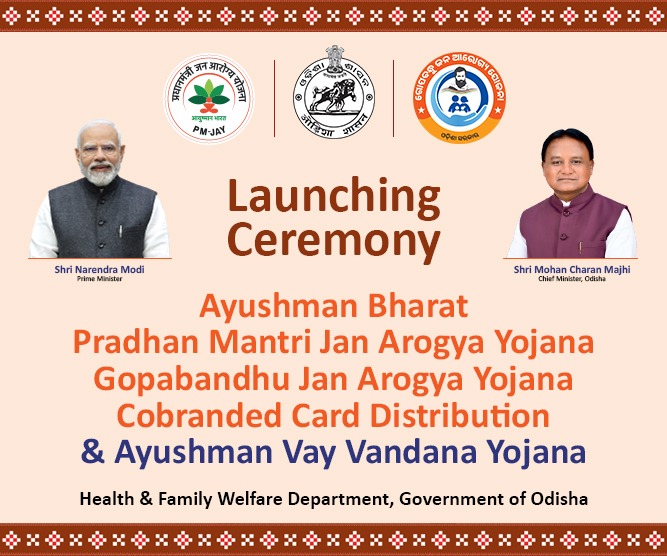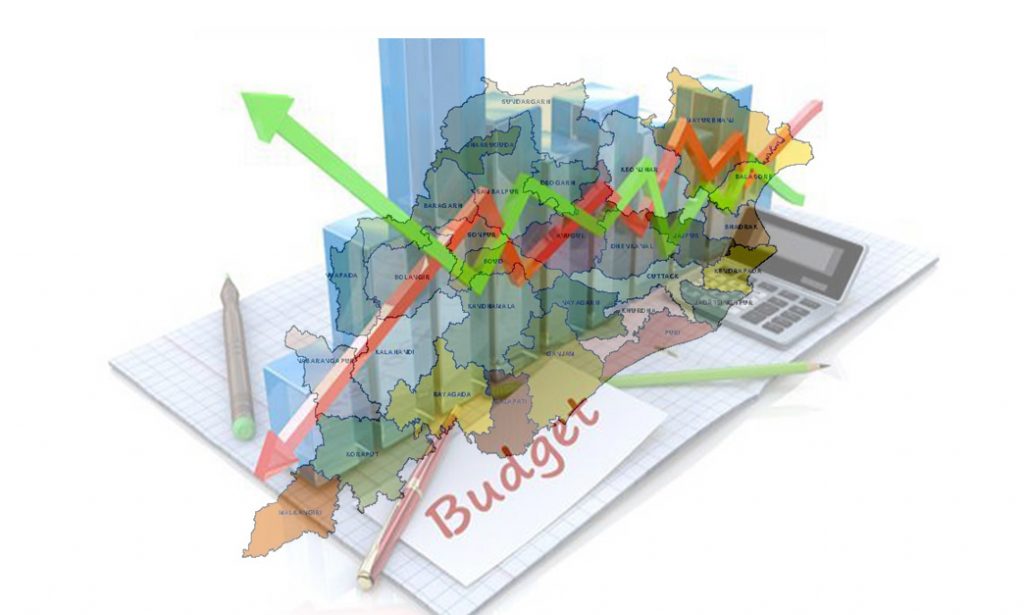Santosh Kumar Mohapatra
Odisha Finance Minister Niranjan Pujari presented his maiden and full budget for the fiscal 2019-20 June 28. Chief Minister Naveen Patnaik said the budget was development-oriented, pro-poor, pro-women and that it reflected the aspirations of the people of Odisha. Opposition leaders described it as disappointing and pointed out that there was no new avenue for resource generation in it.
The total budgetary outlay of Rs 1,39,000 crore for the current fiscal is marginally higher than the outlay of Rs 1,32,660 crore pegged in the Vote-on-Account presented by former Finance Minister Shashi Bhusan Behera in February. However, it is 15.8 per cent higher than the revised outlay of Rs 1,20,125 crore for the previous fiscal. The rise is appreciable as it is higher than estimated rise in nominal GSDP. The nominal GSDP is an estimated Rs 5,40,812 crore in the current fiscal against Rs 4,86,004 crore the previous fiscal, indicating a 11.28 per cent increase.
The disaster response fund has increased from Rs 1,865 crore in 2018-19 to Rs 4,600 crore. It had been pegged at Rs 2,000 crore in the Vote-on-Account. Transfers from state to local bodies and development authorities is estimated to rise to an outlay of Rs 6,490 crore from Rs 5,417 crore the previous fiscal.
The state government has been presenting a separate agriculture budget since 2013-14. The outlay for the maiden agriculture budget was Rs 7,162 crore, which has gone up to Rs 20,716 crore this year — 23.6 per cent higher than the Rs 16,765 crore of the previous fiscal. In Vote-on-Account, it was pegged at Rs 19,557 crore. However, the agricultural budget has not led to rise of irrigation coverage substantially and there is no discernible improvement in standard of living of farmers. Odisha is still dependent on other states for fish, onion, potato and eggs, among other things, and our farmers suffer from paucity of storage facilities.
However, gain in agricultural productivity in Odisha has been recognised at the national level as it was conferred with the ‘Krishi Karman Award’ five times over the last seven years. Allocation for KALIA scheme has risen from Rs 4,661 crore in Vote-on-Account to Rs 5,611 crore as number of beneficiaries has been enhanced to 75 lakh. To make credit available at effective interest rate of 1 per cent to farmers for loans up to Rs50,000 and 2 per cent for loans above Rs 50,000, a sum of Rs 800 crore is proposed under the scheme for interest subsidy or subvention on crop loan during 2019-20. The state government has reduced interest rate on crop loans up to Rs1,00,000 from 1 per cent at present to 0 per cent for farmers repaying loans promptly. Crop loans up to Rs 1,00,000 are now interest-free.
The state’s own tax as per percentage of GSDP (Tax-GSDP ratio) is yet to reach 6.75 per cent, the level fixed by the 13th Finance Commission. It is estimated to be only 6.10 per cent of GSDP in 2019-20 as against 6.02 per cent in 2018-19
The state’s own tax as per percentage of GSDP (Tax-GSDP ratio) is yet to reach 6.75 per cent, the level fixed by the 13th Finance Commission. It is estimated to be only 6.10 per cent of GSDP in 2019-20 as against 6.02 per cent in 2018-19. It is disconcerting that in 2016-17, it was estimated to be 6.06 percent but in revised estimate, it reduced to 5.94 per cent. Similarly, in 2018-19, it was estimated to be 6.44 per cent of GSDP, but it is lowered to 6.02 per cent in revised estimate.
Similarly, the state’s own revenue as percentage of GSDP has reached record high of 9.51 per cent in 2015-16 and has revolved around 8.3 per cent over the last three years; it is estimated to be 8.42 per cent in 2019-20 against 8.32 per cent in 2017-18. It means the state has to explore new avenues to raise resources. It is high time the Odisha government explored various avenues to enhance revenues; otherwise a resource crunch will hinder progress and the state may be dragged in to a debt trap.
Capital expenditure is extremely important as it creates assets. But it was pegged at Rs 29,808 crore in 2018-19 and reduced to Rs 28,797 crore in revised estimate. In the current fiscal, there is only a marginal increase to Rs 30.262.09 crore, which may be negative if inflation is taken into account.
Growing expenditure of the state government on populist schemes without commensurate rise in revenue has pushed debt stock upward. In the current fiscal, borrowing, including other liabilities, is expected to increase to Rs 22,584 crore from Rs 16,942.20 crore the previous fiscal. As a result, the state’s debt burden will touch Rs 1,06,527 crore by end of March 2020. However, debt stock, estimated to be 19.7 per cent of GSDP by March 2020, is within the permissible limit of 25 per cent.
The total revenue expenditure is an estimated Rs 1,08,738 crore during financial year 2019‐20. Thus, after achieving revenue balance, a surplus of Rs 6,528 crore has been projected in the budget estimates for 2019‐20, which is 1.21 per cent of GSDP. The fiscal deficit is projected at Rs 18,877 crore, which is 3.49 per cent of GSDP and within the limit of 3.5 per cent prescribed under Odisha FRBM Act, 2005.
Though fiscal prudence has been maintained, fiscal stress is reflected in the gradual rise of debt-to-GSDP and interest payments-to–revenue-receipt ratios. What is more worrisome is that debt stock as percentage of revenue receipts is increasing. It was 75.92 per cent in 2014-15, but has been estimated to be 92.42 per cent in 2019-20.
On the jobs front, no attempt has been made to fill vacancies, especially in health and education. Unemployment rate in the state in 2017-18 was 7.1 per cent (urban areas 8.4 per cent and rural areas 6.9 per cent), while the national average was only 6.1 per cent. A decline in administrative expenditure means the chances of recruitment or filling up of vacancies are slim. Higher growth of 8.35 per cent in 2018-19 has no meaning if it does not create jobs and does not improve the standard of living of the masses.
The writer is an Odisha-based economist. e-Mail: skmohapatra@gmail.com

